
BATON 05
Ground Handling
A super team which provides safe and secure aircraft

ABOUT
Ground handling is work performed on the ground to support safe and on-time departures and arrivals.
Ground handling staff perform various work based on good teamwork to achieve on-time departures, such as aircraft towing, marshalling, cabin and aircraft cleaning, and loading and unloading of baggage and cargo.
When the aircraft departs, they wave toward the aircraft and see off the passengers with gratitude. They are professionals who support the delivery of comfortable flights.
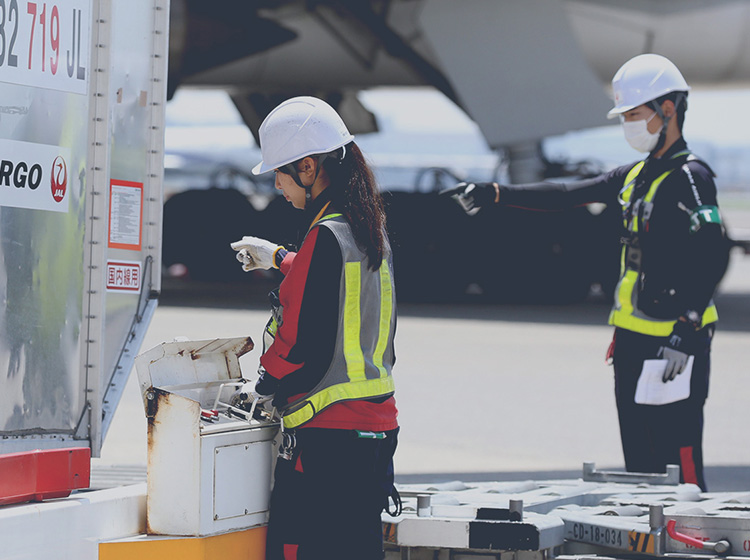
INTERVIEW
In the short time of 45 minutes between landing and takeoff, a tremendous amount of work has to be completed, such as unloading baggage, guiding passengers, supplying aircraft with electric power, cleaning cabins, and towing aircraft. Each job has to be done speedily and accurately, and requires teamwork. At least four workers are assigned to one aircraft. We coordinate as a team and maintain close communication to achieve on-time departures.
In an emergency such as a flight delay, we must strengthen our teamwork. The frontline is alive and vibrant, and detailed information on ever-changing conditions and changes must be shared. In situations like these, we make decisions flexibly instead of going by the book (manuals) and create an environment where each worker remains alert and calm. To increase our capacity to deal with emergencies, we treat problems of others as our own, and set up measures in advance so that customers do not see us rush in case an emergency arises.
We work smoothly, prepare systems before departure, and ensure the flight departs on time. In ground handling, a great deal of time is spent dealing with aircraft. All our work leads to the customers' safety and comfort. Providing a safe and secure aircraft is the best baton pass we can make. It is our greatest joy and sense of fulfillment to see aircraft take off to the skies. Ground handling may seem like behind-the-scene work, but surprisingly we are in the customers' eyes. We work with sharp movements in order to reassure them, keeping in mind that they are watching us from the terminal. My motto is "safety which fascinates" and not "safety to show". I also concentrate on my attitude toward work, all the more because JAL's aim is to deliver peace of mind to the customers.
PASS THE BATON
AIRPORT
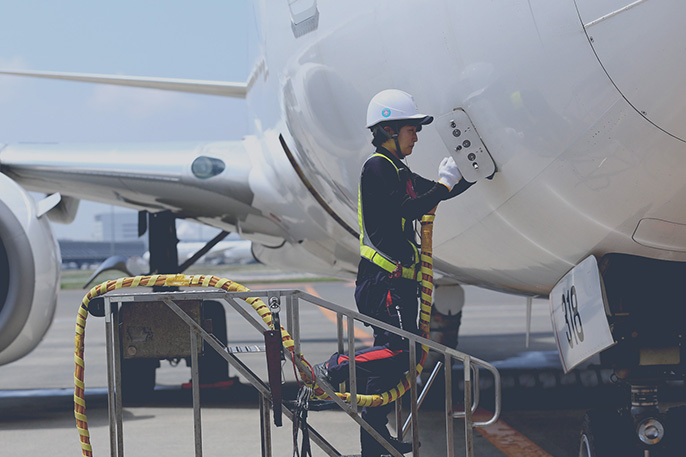
Electric power supply
When an aircraft enters the parking spot, we connect electric power cables from the ground to the aircraft to supply electric power.
As power switches from auxiliary unit power to ground unit power, reduction of gas emissions prevents air pollution.
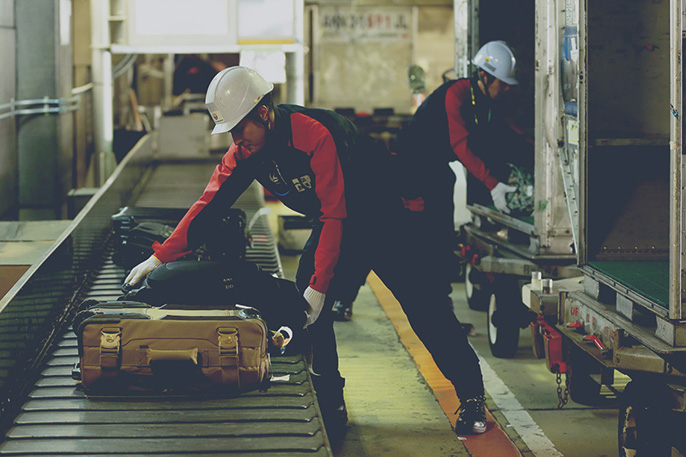
Baggage loading
Baggage which customers check in at the counter are delivered on a belt conveyor to what is called the "circle belt."
Staff sort baggage assembled on the circle belt to containers by route, check baggage tags indicating the destination, flight number and departure date of the bag, and load them into containers.
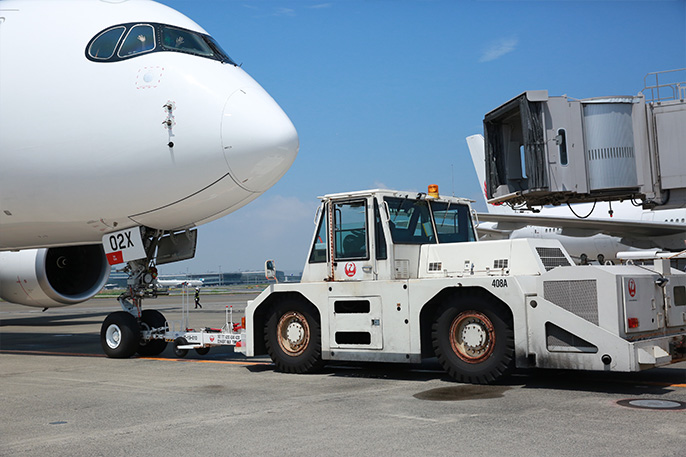
Push Back
As an aircraft cannot self-propel in reverse, it is connected to a Towing Car with a Tow Bar and the aircraft is pushed back to the taxiway where it can self-propel.
As a departing aircraft is loaded with passengers, fuel, cargo, baggage and such, the Towing Car must be driven carefully and stably at a fixed speed.
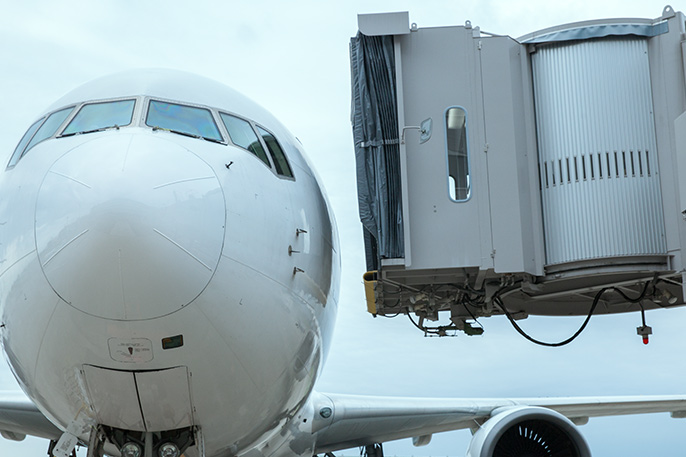
Set PBB
The first ground equipment to move when an aircraft enters a parking spot is the Passenger Boarding Bridge (PBB), which connects the terminal and the aircraft entry door.
When setting a PBB to an aircraft, it is operated carefully to avoid striking the aircraft, and also quickly so that passengers may disembark smoothly.
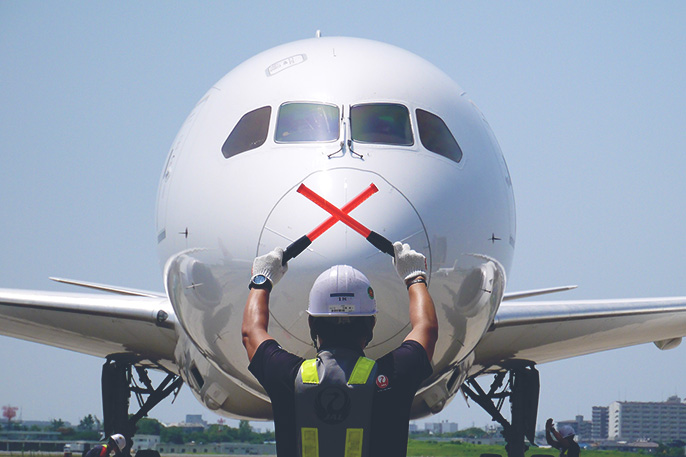
Marshalling
A marshaller gives signs to the pilot of an arrival aircraft with a paddle in each hand so that the pilot can stop the aircraft safely in the correct position.
A marshaller accurately guides the aircraft to the stop line, while judging the direction of the aircraft's movement, the speed of entering the spot, and the time to stop the aircraft.
Cabin cleaning
After the passengers disembark, cabin cleaners sit in each seat to remove waste from seat pockets, arrange and replenish inflight magazines, etc. and set all items to be used by passengers such as blankets and pillows within limited time.
They pay attention to even the slightest particle of dust to provide a comfortable and relaxing cabin for customers.
Aircraft
cleaning
Aircraft cleaning not only improves the appearance of aircraft, but is also essential for safety reasons, as it prevents corrosion and reduces air resistance, etc. Cleaners get on a high lift loader and clean the aircraft from the nose to the wings and the tip of the tail manually with a 10cm×30cm pad attached to a long pole absorbed with special detergent. Work is performed mainly at night for about six hours by about 10 people.
